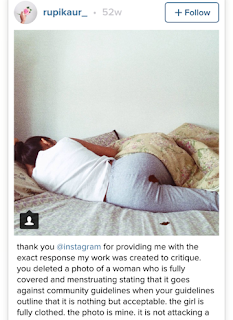 In
GoT, Brienne of Tarth insists on multiple occasions that though she is
highborn, she is certainly not a lady. She does not live the cushy lifestyle of
ladies nor does she dress like them. Instead, she lives as a knight fighting
for chivalry, honor, and glory. Though her large physique allows her to fight
against male knights, she faces many social challenges due to her gender.
Strict gender roles of the day labeled Brienne as a sort of gender bender stuck
uncomfortably between the male and female world.
In
GoT, Brienne of Tarth insists on multiple occasions that though she is
highborn, she is certainly not a lady. She does not live the cushy lifestyle of
ladies nor does she dress like them. Instead, she lives as a knight fighting
for chivalry, honor, and glory. Though her large physique allows her to fight
against male knights, she faces many social challenges due to her gender.
Strict gender roles of the day labeled Brienne as a sort of gender bender stuck
uncomfortably between the male and female world.
Brienne
first proved that she was a good fighter when she defeated the charming and
talented Sir Loris in a sword fight. As a prize, King Renly Borathean grants
Brienne a favor and she requests a place in his King’s Guard. Though Brienne is
clearly fit for the position, the crowd is shocked when the King decides to
give her the prestigious position. Though the position greatly increases Brienne’s
agency and power, she is not given the same amount of respect as the male
knights of equal rank.
 While
escorting Jamie Lannister to King’s Landing, their first conversation revolves
entirely around her appearance and fighting abilities. After learning her
family name, the next thing Jamie asks is, “Have you know many men? Of course
not. Women? Horses?” He goes on to mention how ugly she is and that she could
never possibly beat him in a fight. Comments about both her sexual past and her
womanly disadvantage continue throughout the journey.
While
escorting Jamie Lannister to King’s Landing, their first conversation revolves
entirely around her appearance and fighting abilities. After learning her
family name, the next thing Jamie asks is, “Have you know many men? Of course
not. Women? Horses?” He goes on to mention how ugly she is and that she could
never possibly beat him in a fight. Comments about both her sexual past and her
womanly disadvantage continue throughout the journey.
Later,
when Brienne and Jamie are captured by Locke under the orders of House Bolton, she
is not given the same respect as her fellow male prisoner. The first thing the
men do when they set up camp is attempt to gang rape Brienne. The men only stop
because Jamie points out that Brienne is highborn and could bring a large
ransom. Later, when they arrive at Harranhal to be delivered to Lord Roose
Bolton who insists that his men find something “appropriate” for Brienne to wear.
She is uncomfortably stuffed into a pink dress and is encouraged to behave like a
“lady.”
After
Jamie leaves Harranhal along with Lord Bolton, Brienne is left in Locke’s care
yet again. He decides that she is worth no more than entertainment, and throws
her in a bear pit with nothing for protection but a wooden sword. While she is
down there the men sing a song called The
Bear and the Maiden Fair which goes something like this:
Oh, I'm a maid, and I'm pure and fair!
I'll never dance with a hairy bear!
I called a knight, but you're a bear!
All black and brown and covered in hair!
I'll never dance with a hairy bear!
I called a knight, but you're a bear!
All black and brown and covered in hair!
He lifted her high in the air!
He sniffed and roared and he smelled her there!
She kicked and wailed, the maid so fair!
He licked the honey all up in her hair!
He sniffed and roared and he smelled her there!
She kicked and wailed, the maid so fair!
He licked the honey all up in her hair!
She sighed and she squealed and she kicked the air!
Then she sang: My bear! My bear so fair!
And off they went into the summer air!
The bear, the bear,
And the maiden fair!
Then she sang: My bear! My bear so fair!
And off they went into the summer air!
The bear, the bear,
And the maiden fair!
This is not the entire song, but you get the picture. Yet
again, Brienne’s accomplishments are ignored and she is seen as a regular
women, less respected than other highborn ladies because she does not fit the
norm. At the same time, all the men can concentrate on is her sexuality and
whether or not she is a virgin or not. Even when they throw her to her death,
the men of Harranhal joyously sing of a “bear” stealing her virginity.















